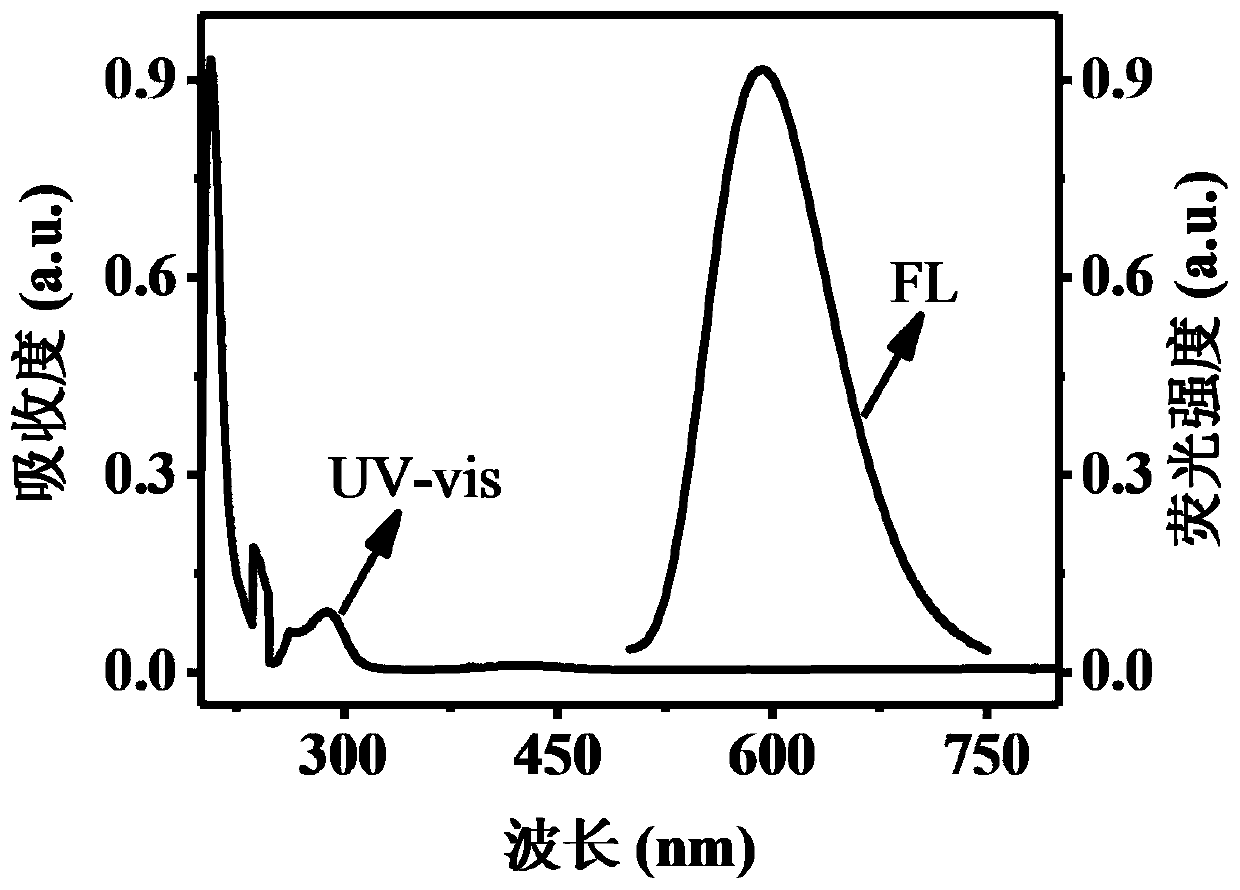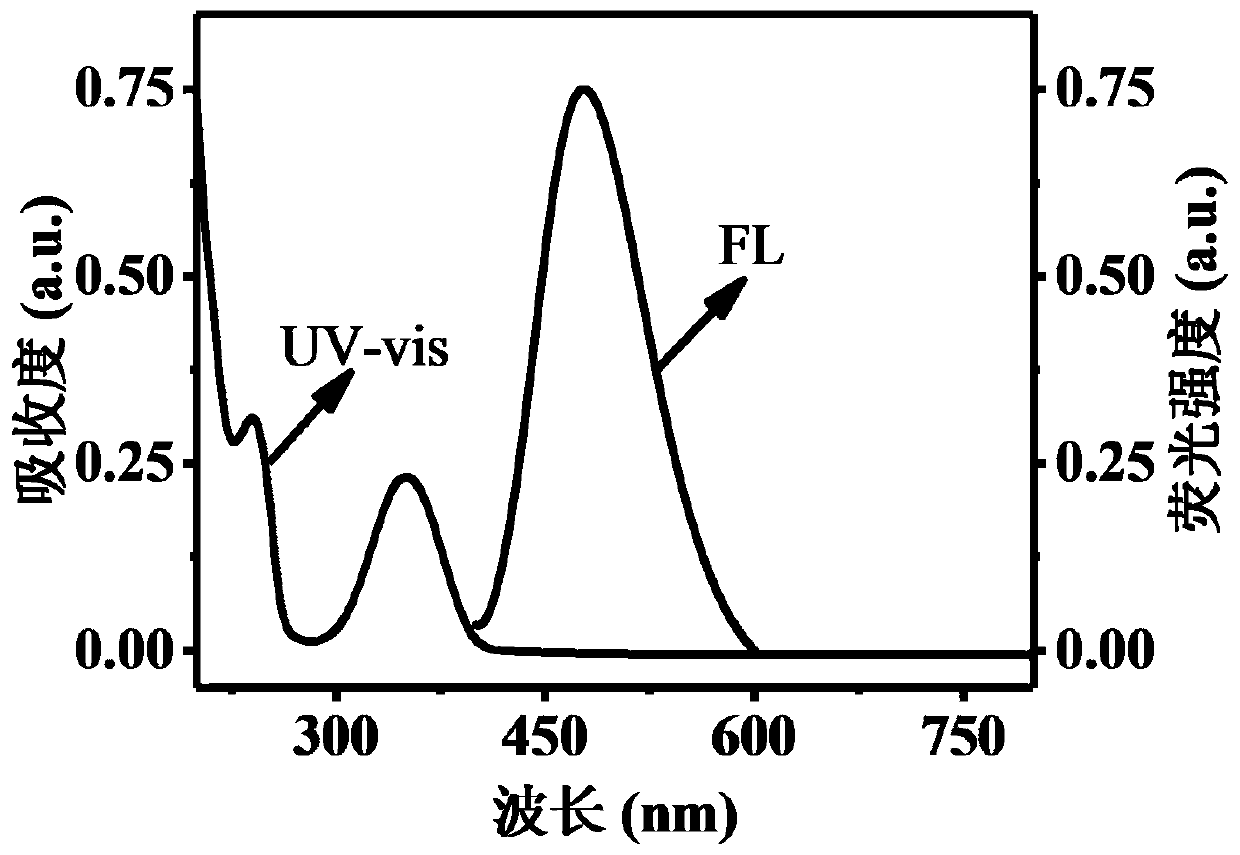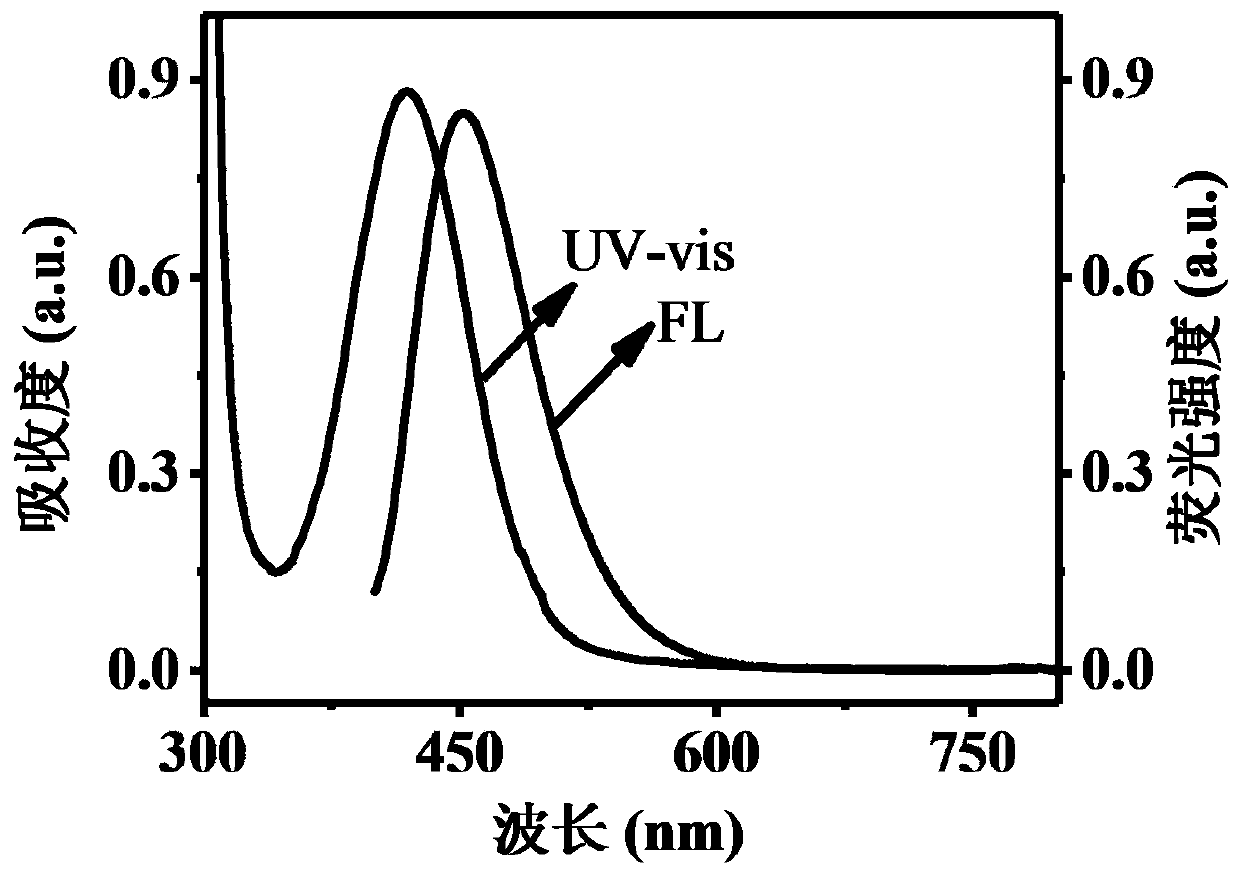Rate fluorescent probe for detecting PTK7 and preparation method of rate fluorescent probe for detecting PTK7
A ratiometric fluorescent probe and fluorescence technology, which is applied in the field of nanomaterials, fluorescence ratio technology and biological analysis and detection, can solve the problems of lack of selectivity and limit the development of fluorescence measurement
- Summary
- Abstract
- Description
- Claims
- Application Information
AI Technical Summary
Problems solved by technology
Method used
Image
Examples
Embodiment 1
[0043] Preparation of y-CDs, b-CDs and Fe 3 o 4 Nanoparticles, the steps are as follows:
[0044] For b-CDs, 1.2 g of citric acid monohydrate and 600 μL of diethylenetriamine were dissolved in 20 mL of deionized water, and ultrasonicated for 20 minutes to fully dissolve; the above solution was transferred to a 30 mL autoclave, and reacted at 180 °C for 4 hours; After the reaction is completed, cool it down to room temperature, take out the product and add ethanol and acetone alternately until it precipitates, centrifuge at 8000 rpm for 10 min, discard the supernatant, and dry the solid in vacuum at 60°C to obtain a light yellow powder, which is sealed and stored for later use to obtain b-CDs . Its TEM picture is as follows figure 2 As shown, its fluorescence and UV absorption diagrams are shown in figure 2 .
[0045] y-CDs was made from o-phenylenediamine (0.32 g) and 4-aminobutyric acid (0.31 g) as raw materials, added 20 mL of deionized water, and dissolved by ultraso...
Embodiment 2
[0048] prepared in Fe 3 o 4 The complementary strand (cDNA) of the cross-linked PTK7 aptamer (APT) on the surface of the nanoparticle is used to specifically bind the probe of APT labeled with yellow fluorescent emission carbon dots (y-CDs), and the steps are as follows:
[0049] Step 1. Preparation of y-CDs-labeled APT (y-CDs-APT)
[0050] Step (1), measure 500 μL of the yellow carbon dot solution (y-CDs) prepared in Example 1 and 500 μL of PBS (pH7.2-7.4) buffer.
[0051] In step (2), add 0.0193 g of EDC and 0.0226 g of NHS, adjust the pH to 7.5 with 1M NaOH after shaking at room temperature for 30 min;
[0052] Step (3): After centrifuging APT at 4000 rpm for 1 min, add 25 μL of PBS (pH7.2-7.4) buffer solution to make it 100 μM, then heat 100 μM cDNA at 95 °C for 4 min, and cool in an ice bath for 4 min. Leave it at room temperature for a while.
[0053] Step (4), add 5 μL of 100 μM APT to the solution in step (2) and shake at room temperature overnight to obtain y-CDs-...
Embodiment 3
[0056] Example 3 Preparation of Standard Curve PTK7:
[0057] The steps are as follows: Take 600 μL of different concentrations of PTK7 (0, 0.1, 0.2, 0.5, 1.0, 2.0, 5.0, 10, 20, 50, 100, 200 ng mL -1 ), each added 20 U of DNase I, and the reaction system was incubated at 37 °C for 30 min. Add 20 μL of b-CDs and mix well by shaking. Each concentration was operated in triplicate in parallel, the excitation wavelength of fluorescence measurement was 380 nm, the emission wavelength of y-CDs was 580 nm, and the emission wavelength of b-CDs was 460 nm. 580 ) and b-CDs (I460 ) fluorescence ratio I 580 / I 460 The concentration correlation with PTK7 quantifies its concentration. see results Figure 6 , 7 shown.
PUM
 Login to View More
Login to View More Abstract
Description
Claims
Application Information
 Login to View More
Login to View More - R&D
- Intellectual Property
- Life Sciences
- Materials
- Tech Scout
- Unparalleled Data Quality
- Higher Quality Content
- 60% Fewer Hallucinations
Browse by: Latest US Patents, China's latest patents, Technical Efficacy Thesaurus, Application Domain, Technology Topic, Popular Technical Reports.
© 2025 PatSnap. All rights reserved.Legal|Privacy policy|Modern Slavery Act Transparency Statement|Sitemap|About US| Contact US: help@patsnap.com



